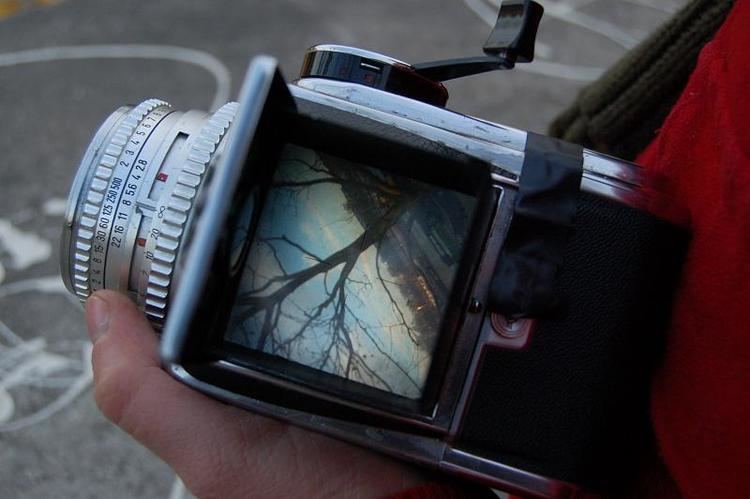 | ||
The waist-level finder (WLF) is a type of viewfinder that can be used on twin lens and single lens reflex cameras. While it is typically found on older medium format cameras, some newer and/or 35 mm cameras have this type of finder (perhaps as an option).
Contents
In the reflex camera, the light from the lens is projected onto a focusing screen. The waist-level finder makes this screen viewable from above, where the image is seen upright but reversed left-to-right.
The eye-level finder is an evolution of the waist-level finder, using a roof pentaprism or pentamirror to correct the image while making it viewable through an eyepiece at the rear of the camera.
Some digital cameras have an articulating screen or a swivel lens, this allows the screen to be angled to make it viewable at waist-level. With live preview the screen can be used as a viewfinder.
